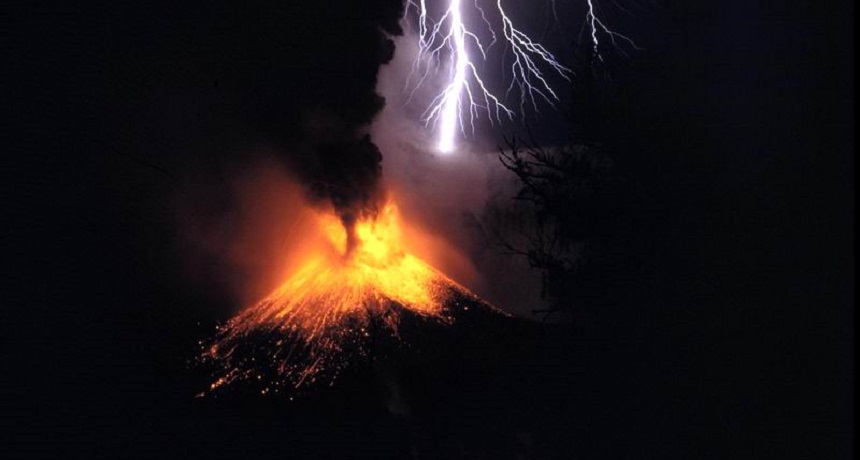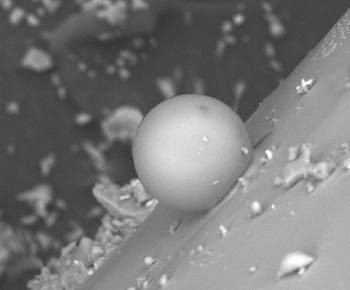News Brief: Volcanic spark zaps ash to glass
The lightning associated with some eruptions can turn volcanoes into crafters of tiny glass beads

Lightning often accompanies volcanic eruptions, such as at this 1995 event on Indonesia’s Mount Rinjani.
Oliver Spalt/ Wikimedia Commons CC-BY-2.0, GFDL
Lightning bolts often flash and crash high above erupting volcanoes. But those fireworks can provide more than a dramatic light show, new data show. They can transform flying ash into glass.
The finding could explain very tiny glass beads often found amidst deposits of volcanic ash. Researchers shared their discovery online February 27 in the journal Geology.
A volcanic eruption can kick material high into the atmosphere. Because much of it can be electrically charged, this material can spark lightning bolts. That lightning can heat the nearby air to more than 3,000° Celsius (more than 5,400° Fahrenheit). That’s easily hot enough to melt any debris in the air. If that material then quickly cools, it can become glass.

Volcanologist Kimberly Genareau works at the University of Alabama in Tuscaloosa. She was part of a team that sifted through ash deposits from two volcanic eruptions. One occurred in 2009 at Mount Redoubt in Alaska. The other took place a year later at Eyjafjallajökull in Iceland. At each site, the ash contained microscopic glass balls.
Back in the lab, the researchers mimicked the conditions above erupting volcanoes. To do this, they exposed ash-like material to with strong electric discharges — artificial lightning. Again, they found the glass balls. Those created in the lab averaged 17 micrometers (670 millionths of an inch) wide. The naturally occurring balls had been bigger — 48 micrometers wide, on average.
As much as 5 percent of the volcanic ash had been reformed into glass, the researchers now estimate. This conversion of ragged rocky bits to smooth, aerodynamic glass would cause the volcanic debris to fall faster, the researchers point out. It also would make that debris less likely to clump.
Power Words
(For more about Power Words, click here)
aerodynamic Having a shape that reduces resistance from air flowing past.
ash (in geology) Small, lightweight fragments of rock and glass spewed by volcanic eruptions.
debris Scattered fragments, typically of trash or of something that has been destroyed. Space debris, for instance, includes the wreckage of defunct satellites and spacecraft.
electric charge The physical property responsible for electric force; it can be negative or positive.
fulgurites Glassy deposits that form in rocks or in sediment when a lightning bolt travels from a cloud, striking the ground.
glass A hard, brittle substance substance made by melting sand (silica) together with lime (a highly alkaline material obtained by heating limestone) and other ingredients, then cooling the mix quickly. Glass usually is transparent and fairly inert (chemically nonreactive).
volcanism The processes by which volcanoes form and change over time. Scientists who study this are known as volcanologists and their field of science is known as volcanology.
volcano A place on Earth’s crust that opens, allowing magma and gases to spew out from underground reservoirs of molten material. The magma rises through a system of pipes or channels, sometimes spending time in chambers where it bubbles with gas and undergoes chemical transformations. This plumbing system can become more complex over time. This can result in a change, over time, to the chemical composition of the lava as well. The surface around a volcano’s opening can grow into a mound or cone shape as successive eruptions send more lava onto the surface, where it cools into hard rock.







